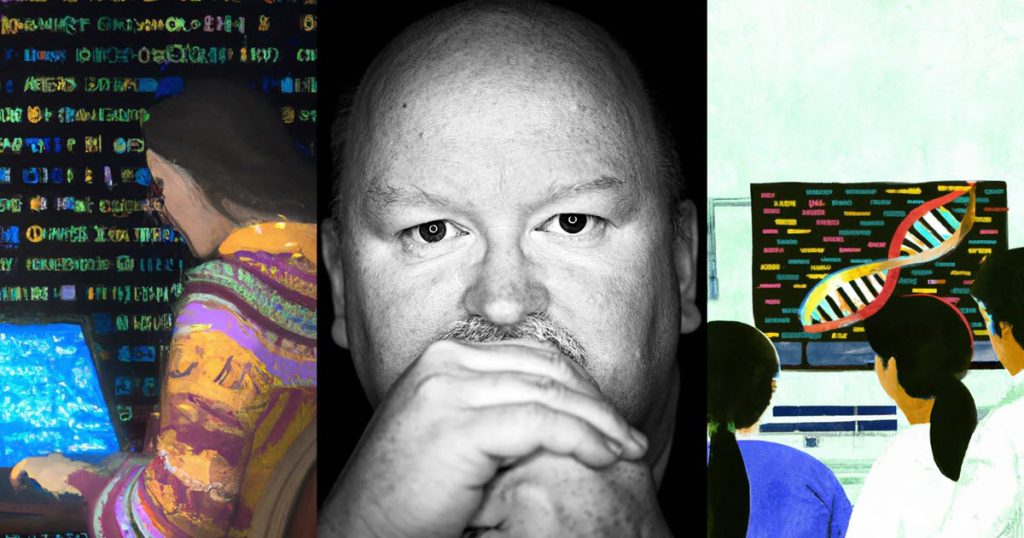Deep learning has rapidly evolved as one of the most influential technologies in the modern era. Its applications, from voice-activated assistants to medical image analysis, demonstrate the vast capabilities and potential it holds for various industries. The essence of this article is to break down the seemingly complex world of deep learning into digestible pieces specially tailored for students eager to embark on this fascinating journey.
The Promise and the Hype
The buzzwords “deep learning” and “neural networks” have become almost synonymous with innovation and advancement in tech. Yet, for many students, these terms remain shrouded in mystery, often intimidating those who wish to venture into the realm of artificial intelligence. Demystifying these concepts is crucial for budding AI enthusiasts to grasp their foundational knowledge.
A Step Towards Simplifying the Complex
One might wonder why a deep dive into this subject is necessary when there are multiple platforms offering services like write paper for me cheap that can deliver insights instantly. However, a genuine understanding and hands-on approach to deep learning will prove invaluable for those truly invested in making a mark in the AI field.
The Evolution of Thought Models
Before the emergence of today’s sophisticated neural networks, artificial intelligence was primarily rule-based. Early AI models relied on explicitly programmed instructions. However, as researchers aimed to emulate the human brain’s processing, they envisioned systems that could learn from data, leading to the inception of neural networks in the 1950s and 1960s. While the initial progress was promising, limitations in computing power and data led to a temporary wane in interest until the late 1990s and early 2000s, when significant breakthroughs paved the way for the current era of deep learning.
Basics of Neural Networks
Neurons: The Building Blocks
At the heart of every neural network is the neuron – inspired by the biological neurons in our brain. These artificial neurons receive input, process it (often with a weighted sum), and pass on the output to the next layer. The nature of this output is determined by an activation function, which decides if a neuron should be activated or not based on the input it receives.
From Singular to Layers
A single neuron can only do so much. However, when combined into layers – an input layer, one or more hidden layers, and an output layer – they form a neural network. The ‘depth’ of these networks (i.e., the number of layers and neurons) can vary, but as they get deeper, they can capture and model more complex relationships in the data they’re trained on.
Weights, Biases, and Activation
Every connection in a neural network has a weight, which adjusts during learning, determining the strength of the signal between neurons. Biases, on the other hand, allow neurons to fire even when all of their inputs might be zero. The combination of inputs, weights, and biases is what gets fed into an activation function, thus determining the output of each neuron.
Understanding Deep Learning
Though traditional machine learning models like decision trees or linear regression rely on structured data and explicit programming, deep learning works differently and can be hard to crack without additional resources. Deep learning models are capable of learning patterns from unstructured data such as images or texts independently through the neural network “depth,” which refers to its multiple layers used for architecture.
Traditional machine learning relies on manual feature extraction, while deep learning automates this process. For instance, image recognition relies on manually identifying edges or corners; by contrast, deep learning models discern these features on their own with increasing layers and data sets.
The ‘deep’ in deep learning is not just a fancy adjective. It refers to the number of layers in the network, enabling these models to recognize more abstract and complex features – something which makes deep learning so effective at tasks such as speech recognition, image classification, and language translation.
Key Components of Deep Neural Networks
Layers
Neural networks consist of an input layer, where raw data is fed, one or more hidden layers that process this data, and an output layer that delivers the final result. As data moves through these layers, each neuron processes parts of it, gradually extracting and refining features until the output layer makes a final decision or prediction.
Activation Functions
Activation functions, like Sigmoid, ReLU, or Tanh, play a pivotal role in determining the output of neurons. They help introduce non-linearity to the model, allowing neural networks to capture complex relationships. For example, the ReLU (Rectified Linear Activation) function, which outputs the input if it’s positive and zero otherwise, has become popular due to its efficiency in training deep neural networks.
Backpropagation
Neural networks learn through a process called backpropagation combined with gradient descent. When the model makes a prediction, it measures the error between the prediction and the actual value. This error is then ‘backpropagated’ through the network, adjusting the weights to minimize the error for future predictions.
Types of Neural Networks
- Feedforward Neural Networks have the simplest form, where information moves in one direction: from the input layer, through the hidden layers, to the output layer without looping back.
- Convolutional Neural Networks (CNN) are primarily used in image processing. CNNs have special layers (convolutional layers) that can automatically and adaptively learn spatial hierarchies of features from input images.
- Recurrent Neural Networks (RNN) are designed for sequential data, RNNs possess ‘memory’ about previous inputs in the sequence, making them suitable for tasks like time series forecasting and natural language processing.
- Long Short-Term Memory is a type of RNN that can learn and remember over long sequences and is less susceptible to the vanishing gradient problem.
- Transformer Networks are used predominantly in natural language processing, these networks can pay varying degrees of attention to different words in a sequence, leading to better context understanding.
- Generative Adversarial Networks comprise two networks (a generator and a discriminator) that work against each other to produce synthetic, yet realistic data.
- Radial Basis Function Networks are often used in function approximation and control problems, so they can classify data that isn’t linearly separable.
Tips for Students Who Are Just Getting Started
Theoretical Foundation
Before diving into hands-on projects, ensure you have a solid theoretical foundation. Deep learning is a vast field, and understanding the math and logic behind neural networks can be invaluable. Resources like online courses, textbooks, and academic journals can offer comprehensive insights.
Hands-on Experience
It’s crucial to put theory into practice. Use platforms like TensorFlow, Keras, or PyTorch to experiment and build neural networks. Start with small projects, perhaps a basic image recognition task, and progressively take on more complex challenges.
Join forums, online communities, or local AI groups. Engaging with peers can provide collaborative learning opportunities, feedback on your projects, and even potential partnerships for larger projects.
Continuous Learning
The field of deep learning is continually evolving. Regularly update your knowledge through webinars, workshops, conferences, and research papers. Remember, in the realm of AI and deep learning, there’s always something new to learn!
Conclusion
Students navigating the vast world of deep learning may benefit from resources like this article and various online guides like best dissertation writing services to navigate its nuances and subtleties. AI platforms and essay services demonstrate how knowledge has become more accessible and democratic through technology.
However, true mastery in deep learning comes from personal discovery, consistent practice and an insatiable thirst for knowledge. Neural networks present vast and exciting possibilities for innovation and breakthroughs. Students today are at the forefront of this AI revolution, and with the right tools and determination, they will shape the future of technology.



